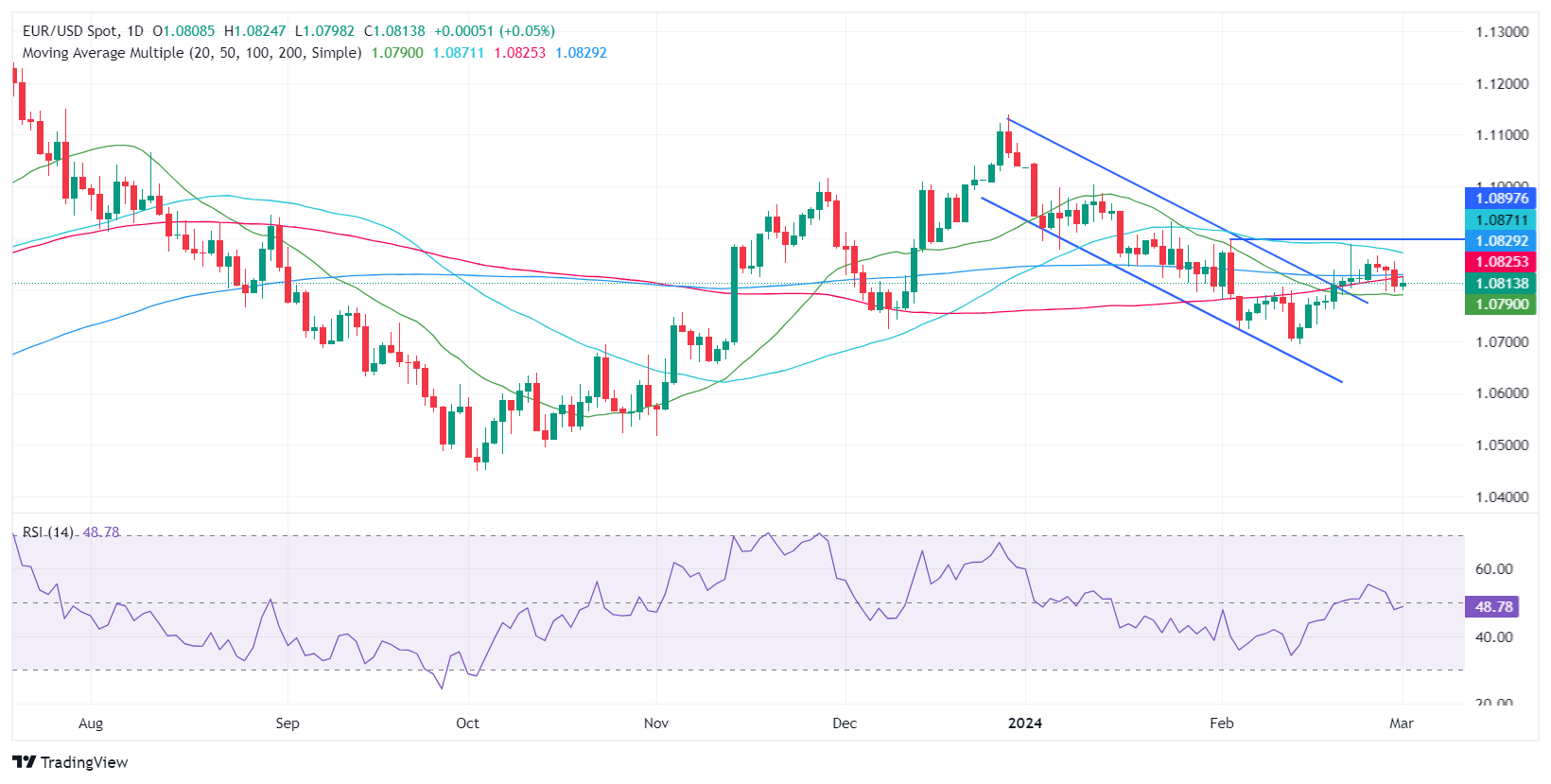- The EUR/USD pair rebounds from its weekly lows, driven by higher-than-expected inflation figures in the Eurozone.
- Yields in Europe and the US rise, supporting the Euro on expectations of rate moves from the ECB and the Fed.
- Comments from ECB's Holzmann and Richmond Fed's Barkin influence market sentiment on monetary policy.
The EUR/USD pair recovers after falling to weekly lows of 1.0795 and once again exceeds 1.0800, trading at 1.0817, up 0.11%. Eurozone (EU) inflation data fueled the rally as the data beat estimates while traders digested the release of manufacturing PMI data.
The main rallies after EU data that exceeds forecasts
EU inflation was released in the middle of the European session, with figures slightly lower but exceeding economists' forecasts. The EU Harmonized Index of Consumer Prices (HICP) rose 2.6% year-on-year, above estimates of 2.5%. Core IPCA rose 3.1% year-on-year, above the 2.9% consensus but below January's 3.3%.
Consequently, yields in Europe and the US rose, providing a tailwind for EUR/USD. Investors continued to project rate cuts of 90 basis points in 2024, expecting the first rate cut in June. Economists at Nordea and Commerzbank estimate that the European Central Bank (ECB) would reduce rates gradually, based on the thesis that wage increases are coming.
Following the data, Robert Holzmann of the ECB commented that they must remain vigilant about the risk to inflation, and added that they cannot rush into their rate decisions.
On the other hand, Richmond Fed President Thomas Barkin had some hawkish words: “We'll see if there are rate cuts this year,” and added that if the numbers remain inconsistent, they should take that into account, stressing that is in no hurry to relax the policy.
S&P Global showed that manufacturing activity expanded strongly in February, with the PMI rising from 50.7 to 52.2 points. Later, the Institute for Supply Management (ISM) reported that the February manufacturing PMI came in at 47.8, disappointing estimates of 49.5 and 49.1 for January.
During the week, the EUR/USD pair fell below 1.0800, but sellers failed to push prices towards the February 20 low at 1.0761, which would have compounded a deeper pullback towards 1.0700. However, Relative Strength Index (RSI) studies are about to turn bullish, opening the door for further upside. If buyers lift the pair above the 200-day moving average (DMA) at 1.0828, the Euro will continue rising and reach the 50-DMA at 1.0871.
EUR/USD Price Action – Daily Chart

EUR/USD
| Overview | |
|---|---|
| Latest price today | 1.08 |
| Today Daily Change | -0.0009 |
| Today's daily variation | -0.08 |
| Today's daily opening | 1.0809 |
| Trends | |
|---|---|
| daily SMA20 | 1.0789 |
| 50 daily SMA | 1.0875 |
| SMA100 daily | 1.0822 |
| SMA200 Journal | 1.0829 |
| Levels | |
|---|---|
| Previous daily high | 1.0856 |
| Previous daily low | 1.0796 |
| Previous weekly high | 1.0888 |
| Previous weekly low | 1.0762 |
| Previous Monthly High | 1.0898 |
| Previous monthly low | 1.0695 |
| Daily Fibonacci 38.2 | 1.0819 |
| Fibonacci 61.8% daily | 1.0833 |
| Daily Pivot Point S1 | 1.0784 |
| Daily Pivot Point S2 | 1,076 |
| Daily Pivot Point S3 | 1.0724 |
| Daily Pivot Point R1 | 1.0844 |
| Daily Pivot Point R2 | 1,088 |
| Daily Pivot Point R3 | 1.0905 |
Source: Fx Street
I am Joshua Winder, a senior-level journalist and editor at World Stock Market. I specialize in covering news related to the stock market and economic trends. With more than 8 years of experience in this field, I have become an expert in financial reporting.







